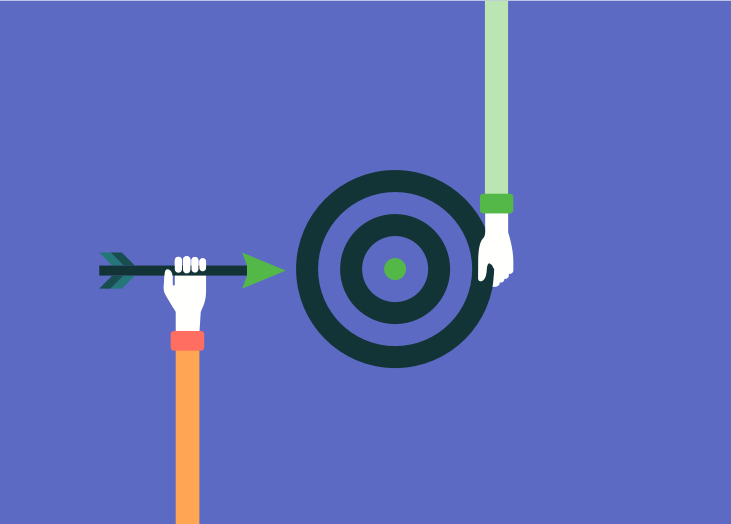It’s no secret that a ton of companies look up to Google and the way they run their business (us included). What if I told you that you could implement one of Google's core management techniques in ...
It’s no secret that a ton of companies look up to Google and the way they run their business (us included). What if I told you that you could implement one of Google's core management techniques in your company tomorrow? And that within 6-12 months it would improve your business to grow faster and run more efficiently and calmly. Would you believe me if I told you it all centers around goal management? Yes, GOALS!!! We say Goals, Google says OKRs Google follows a simple, yet powerful goal management system called OKRs, which is an acronym for Objective, Key Results. The short history is that Andy Grove at Intel came up with this system as an iteration to Peter Drucker’s original Management by Objective philosophy. Grove’s approach, which later became OKRs, was popularized at Intel and then introduced to Google in their early days by John Doerr, an investor who used to work at Intel. John just recently wrote a book called Measuring What Matters, and according to him (and Larry Page), Google credits much of their scaling success to being able to set proper goals company wide. Making sense of OKRs So what the heck is an “OKR” and how does it work? It’s incredibly simple. An Objective is the over archiving statement of what is to be accomplished in a given time period. The Key Results are the measurable items that, once completed, mean the Objective has been reached. Here’s an example: Objective: Expand into XYZ New Market Key Results: Hire or transition 1 new employee focused on XYZ Market Build 10K in new MRR pipeline in XYZ Market Close 2.5K in services revenue in XYZ Market Think of your Objectives as an aspirational statement about what you want to accomplish - they are easy to remember and easy to rally the troops around. Key Results are then the specific and measurable items (the boring stuff!). And just like many goal management systems, Key Results are time bound and typically done every quarter. OKRs keep everyone engaged and in sync with the aspirational (the Objective), but focused on the tactical (the Key Results). Putting OKRs into practice Google bases actions on knowing that in order to be successful with goal usage, you have to be well-rounded when implementing goals in your company. We’re in the habit of establishing goals here at BrightGauge and we’ve picked up a few pointers along the way that will help you unleash the power of goals: Alignment is key - buy in from the top, and everyone else as well. Everyone in the company should have a few goals (OKRs) per quarter and be okay with missing 1-2 of them. Don’t tie in goal achievements to performance reviews or salary bumps. To work like Google, you have to be disciplined with your goal management. And as always, it has to start at the top. The leadership team should have goals and they should be transparent to everyone. When everyone sees leaders going for stretch goals, not only do they understand priorities better, but they see that it’s okay to stretch for something BIG themselves. It’s okay to not be afraid to fail and to not settle for mediocrity. This can seem intense. But because of this culture of aggressive goal setting, Google does not tie performance or compensation to goals, they are completely separate. This can be hard to fathom and hard to do but if you want to push people to stretch, you can’t tie in compensation because we’re only human and people would end up choosing only attainable goals. BrightGauge can help you get started I’ve always bought into the idea of goals. I think it’s important to have constant motivation and a culture of accountability and transparency. Plus, since I’ve been consistent about goal-setting at BrightGauge, the proof has been in the numbers. Since we implemented goals seriously in early 2016, we’ve had our best growth years while also running more calm and focused. It’s no coincidence, setting goals across the company has helped propel our growth. All that being said, to run like Google, all you have to do is get started using Goals in your company. You’re not going to get it right the first cycle or second, but you’ll notice a massive difference in your company 6 to 12 months later when everyone is on the same page, engaged, and motivated to hit their goals. Using our Goals feature can help you get started since we automate some of the annoying stuff (reminders and data pulling). Your employees will be reminded to check into their goals on a weekly basis and assess whether they’re on or off track. Again, since OKRs are ideally not tied to performance and compensation, this will simply keep your team working towards a greater good, without unnecessary pressure. You might be stumped by what to focus on, so we’ve put together a guide for you that can help inspire company-driven goals. Just click on ‘Find Inspiration’ when you start a new goal list in Goal Management. Give it a shot and if you need help, let us know. We love this stuff!

Today we launched Two Factor Authentication (2FA) for all user types! Head to your My Details page (in settings menu) and you’ll see a new sub-menu area with My Details, Password Reset, and Two Factor Authentication. When you click on Two Factor Authentication, you’ll be presented with an input box to enter your cell phone number. We’ll then send you a text to confirm. Once that is set up, every time you log in afterwards, you’ll be prompted to use the code sent to your cell phone. If you lose your cell phone or change it, contact support and we can verify your identity and remove 2FA for you. And you can always disable 2FA anytime you’d like. *Note: Be sure to not include any special characters or symbols in your authentication code. Additional Updates We have updated our legal docs and improved our security posture, making us now fully compliant with GDPR! As mentioned in our blog last month, we took the GDPR regulation as an opportunity to focus on security from top to bottom at BrightGauge since the beginning of 2018. You can visit our new security page for more details but below are the most recent and important changes: Updated Terms of Services and Privacy Policy to more specifically provide GDPR related privacy and terms. And added a Data Processing Addendum. These pages can also be found in settings of your BrightGauge account. In an effort to be more transparent about how we handle your data, we added more information to our Security page. Updated internal security policies - Information Security, Risk Management, Incident Response / Breach Notification. Created a formal bug/vulnerability program for users to find and report vulnerabilities they see. Performed and scheduled, twice annually, an external penetration test on our system. Added Disk Encryption at Rest for our databases. Updated & Increased our application monitoring tools to provide even greater visibility into data flow and potential malicious activity. Assigned a dedicated Data Protection Officer who is responsible for security and privacy at BrightGauge. Added a more stringent password policy for all user types. Added the ability for personal data to be deleted / downloaded by request (a GDPR specific requirement). Worked with all our 3rd party SaaS applications to ensure they are GDPR compliant as well. For more info, check out our https://www.brightgauge.com/legal/.

Over the past 4 months we’ve been working very hard to understand the requirements set forth by the new EU regulation for GDPR, and to comply with all the standards to the best of our ability. To explain a little bit, GDPR marks a big change in data protection laws in Europe. The GDPR aims to strengthen the security and protection of personal data in the EU. The good news is we’ll be compliant by the May 25th deadline. The extra good news is all the technical work we’ve put into being compliant has and will benefit our entire community, not just those folks in the EU. Before the deadline, we will send out an email with all the updates we’ve done, as many are still in progress, including our updated Privacy Policy and Terms of Service. We’re working to become part of the Privacy Shield program, putting more encryption into play, adding extra security features to our app (like 2FA), and adding in more internal controls. We are also ensuring that the 3rd party partners we use to help deliver our service (through monitoring tools, email tools, etc) have also taken the necessary steps to become GDPR compliant. It’s been a heck of a 4 months leading up to this new EU law. As with most regulations, it can be cumbersome to implement the policies and understand the language, but it also helps improve the quality of service for our users. If you have any questions, please don’t hesitate to ask! All this information will be emailed out in mid May and also will be updated in our security page.

Every year starts the same. We take a hard look at the previous year’s numbers and which processes could use improvement. It’s in this last year though that we’ve started to do something different. While what we build continues to be at the top of our list, how we build software has changed. We’ve taken the approach of breaking tasks up even more to improve the way we work together. As a result, our development process has sped up a bit too. With a 13-person product team, we’re close to finding that sweet spot of setting development end goal dates, and actually sticking to them. Here’s what we’re doing different: No Formal Roadmap We continue with no formal roadmaps (same as 2017). Every time I attach a date to a feature, it ends up biting me in the butt later on. The reality is, there's so much we want to do and not enough time to make it all happen. Priorities shift. New information becomes available and other more pressing things often pop up in between. This isn’t just a small software company problem or BrightGauge problem either, this is across the board in building software. Switching to 6 Week Cycles As a software development team we have been working in an “agile” format since 2013. In 2018, we’re following a new format based on a software company we really admire, Basecamp. The gist of the 6 week cycle is that agile is too short of an iteration (2 weeks) to get meaningful work done and 12 week feature themes (that we used in 2017) are too long to get something focused and shipped as we expected from the start. 6 weeks is a good middle ground where we can focus on just a few items and get something sizeable out the door in that time frame. At the end of each cycle we meet to figure out what the next cycle will mostly cover. Until then, we’re all heads down working on the current cycle, not thinking too much about what comes next. One Big Batch Project, Multiple Small Projects at same time With the move to 6 week cycles, a group of 2-3 people will work on one large feature at a time, while another group of the same size will work on multiple small projects. This way we can keep going, gaining easy wins towards improving the app while covering ground, working on harder and larger problems to solve. Splitting Out the Integration Team Randall has been our lone wolf but now he will be in a wolf pack. We’ve hired more resources to focus just on integrations, carving out a full-time team to make this their sole responsibility. These resources are data centric. They know SQL, how to code against APIs, and are excited to further get to know you, our customers. Dedicated SIPP Effort (Security, Infrastructure, Performance, Productivity) Always something in our peripheral, SIPP will take more of a front seat this year. With a larger team to dedicate time and effort to the app’s infrastructure, you’ll notice some great performance improvements over the next year. Faster load times for the win! All of these changes have us really pumped! Like anything else, it’s a work in progress. Our focus remains the same though, build the best service we can for our customers. From there, we hope that translates to helping you improve too. We’d be happy to discuss these areas of focus more. For anyone who’d like to learn more, please feel free to reach out anytime! Join us for our webinar on Thursday, February 8th to learn more about what we're cooking up for this year.

You’ve done it! Months of blood, sweat, and tears — well, hopefully not actual blood — have paid off and you’ve reached the goal you set for yourself. Maybe you thought the goal might have been impossible when you originally set it, but here you are proving yourself wrong. It’s a great feeling. You feel a weight lifted off of your shoulders. When you complete a goal, it’s no longer a goal but an achievement. Something to be proud of. Something to celebrate. Determined people are the ones that complete their goals though, and losing that sense of direction can be jarring. That goal has been burning a hole in your heart and mind for months. You’ve spent so much energy reaching this goal, that being left without it may leave you feeling empty. So, what do you do now? Where do you start? You’ll need to find something to fill that void. Take a More than a Moment to Celebrate Don’t dive headfirst into your next set of goals until you’ve had a chance to appreciate the hard work you put into your previous goals. Whether you reached your goal early and are celebrating alone, or have reached the end of the goal period and are celebrating with the team, allow yourself some time to kick back and have fun. Even the best work environments create a certain amount of stress. Setting goals that require a lot of hard work always come with some amount of stress. They’re designed that way. By setting your bar for success high, you’ve added onto the normal, but hopefully small, levels of stress that come with your current position. So, take some time to enjoy having nothing on your plate. For the first time in a long time, you aren’t chasing a nearly impossible task. Hit happy hour after work. Hang out with your colleagues and discuss everything but work. Go home to your family and enjoy the weekend. Soon, you’ll have a new goal on your plate and the old feelings of stress and doubt will come flooding back. A new round of goal-chasing will start. There is no point in setting goals if you can’t enjoy your own success too. Help Others Reach Their Own Goals If you finish your goals ahead of schedule, use the time to start brainstorming future goals and focusing on your optimizing your daily routine. With the extra time you would have spent pushing extra hard toward that goal, you can help others to achieve their own. While it’s important to make sure you don’t do their work for them, there is nothing wrong with finding ways to help. Perhaps you can take over some of their busy-work to give them some extra time to focus on reaching their goal. You could help them brainstorm ways to improve their workflows and be more efficient. What’s most likely— you'll serve as their shoulder to cry on. Find ways to become involved. Providing a little bit of encouragement can go a long ways toward helping your team. Be a positive influence and you’ll have more people to celebrate with! Refocus & Prepare for the Next Round Once you’ve got the celebrating out of your system and have had some time to refocus, prepare for the next round of goal-chasing. Even if you set your goals collaboratively as a group, start brainstorming new goals or ways to improve upon old goals for your next round. Consider your previous goal. What about it worked? What could have been improved on? Consider these questions both for your goal setting process and the workflows you followed to complete the goal. Chances are that over time, you’ve improved the work processes you used to help you reach the goal. Will that affect how high you set the bar for the next goal? Mindset plays a big role in your ability to complete your goals. If you're burned out, you’ll have a hard time getting back into the groove of chasing a new goal. Make sure you give yourself a break to tackle the next goal with the same vigor and motivation. Once you're settled, dive in. Setting New Goals After successfully completing a goal, there are a few strategies you can take when setting your next one. Like the first, you want to make sure you follow the SMART goal system to ensure what you’re working towards is worthwhile. The SMART goal system dictates that all goals be: Specific Measurable Achievable Relevant Time-Bound These should apply to organizational, team, and personal goals. With those principles in mind, there are a few strategies you can take for setting new goals. Move the Goalpost for Success There were good reasons behind the last set of goals you chose. In all likelihood, they deal with important aspects of your job. Since all goals should be tied to specific KPIs, there is a good chance future goals will use those same metrics. However, the fact you completed the last goal successfully means that you should set the bar a bit higher. Consider moving the the goal post for success a bit and using your last goal as the foundation for a new one. If your goal had been to secure $10,000 in new monthly recurring revenue, try upping that number to $15,000. Consider how long it took you to complete, and with a better idea of how to achieve success, what you will be capable of this time around. Expand Your Previous Goal You can also use your previous goal as a foundation for a new goal while expanding its scope. For instance, if your previous goal was to secure $10,000 in new monthly recurring revenue, you could add new components to your goal to make it more challenging the second time around. For your new goal, you could choose to secure $10,000 in monthly recurring revenue while also securing $10,000 in one-time project-based sales. Any additions you make to your goal should follow the SMART goal principles, and play a critical role in your job duties. Appending a new metric to your old goal adds a new dimension and makes it more challenging. Just because you reach a goal doesn’t mean you need to completely move away from it in future goals. Build upon old goals by expanding their scope. Set a Completely Original Goal Sometimes in pursuit of your goal, you may realize you took the wrong approach. Maybe you should have set the bar lower to make it more achievable. Maybe you should have used a different metric that would have been a better measurement of success. Regardless of whether or not you achieve your original goal, sometimes it is best to start fresh, especially after having months to figure out ways to improve your goal-setting. For instance, you may find that attaching a dollar value to a goal may make it so that aspects of achieving your goal are out of your control. Sometimes luck just isn’t on your side. In example, instead of setting a goal to secure $10,000 in monthly recurring revenue, instead you could decide to set a goal to secure one new sales call per day. Both metrics are ultimately building toward the same end goal — closing new deals — but one is completely in your own hands while the other relies on some outside influences. If you find that a previous goal didn’t work for you, don’t be afraid to rip everything up and start from scratch. Ultimately, you should aim to set the best goals for yourself, based on your job duties. Always Look Forward Give yourself enough time to feel the weight of stress lift off of your shoulders, and refocus your attention. Then, you can begin looking forward toward what your next goals will be. Take what you have learned during the process of completing your original goal into account, and use it to inform future goals. In our professional lives, we’ll never stop chasing goals. There will always be a new carrot at the end of the stick, helping to focus our actions. When you successfully complete a goal you’ve been chasing, take the time to first enjoy your success. Start setting and achieving goals with BrightGauge.

70+ Metrics for MSPs
Key metrics and accompanying formulas to help MSPs skyrocket growth and success!
Get your KPIs

Hello everyone! We’re going to do something crazy in 2018... Yes, you've read right. We've decided to remove our feature request forums. We may be a little crazy but there is logic behind this removal. Here’s why... 1. The Small Vocal Minority are Not Representative of the Whole Out of 10,000+ active users on BrightGauge, only a few participate in the Feature Request forums. Over time, we've found that while we have a vocal minority expressing opinions on features that may not represent the larger majority of feature interests and userbase needs. 2. Too Many Requests Have Built Up Over Time Like with most software companies, we always want to get more done than is possible. With the forums building up over the years, too many of theses requests have gone stale. We'd rather hit refresh and talk directly with you about what you'd like to see more of. Which leads to our final point... 3. We Have Even Stronger Channels for Feature Requests in Place Already This is the biggest reason. The reality is we have other places that work even better for receiving feedback on features and other requests. The best spot is through our support team, which fields about 1,000 tickets per month, quite a few of those being feature requests. Many of these come up countless times but don’t seem to show up on our current Feature Request forums. The other channels we use are live conversations with customers that happen daily, our Data Driven Workshops that happen quarterly in our office, and conferences & meetups that happen throughout the year. These channels are in heavy use and keep us connected. For those that spent time contributing ideas to our forums, I do appreciate the feedback you’ve provided. You will still be heard! Please continue to work with our support team or email me directly (you can ask our support team for my email). We are heading into 2018 with a larger development team and a continued investment in improving the BrightGauge product. Many of the top rated features requested will be tackled. For those who are interested, I’d be happy to share our 6 week roadmap with anyone who wants to hear about it. Brian CEO/CoFounder
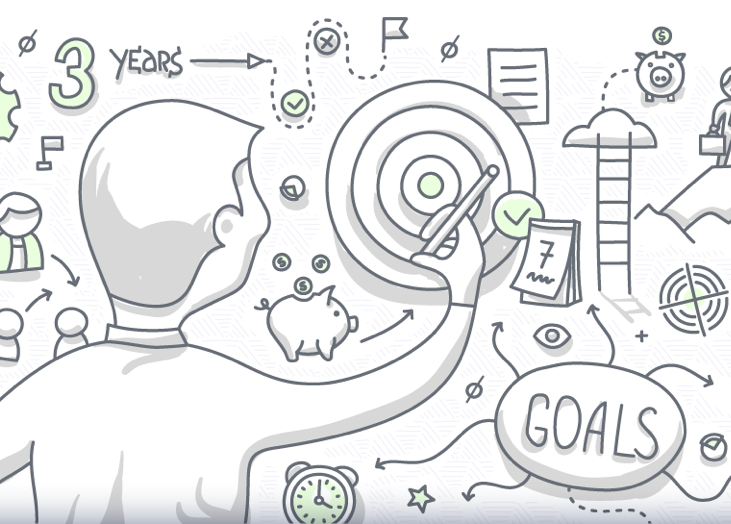
Everything slows down during the holidays, which makes for the perfect time to review the KPIs that we rely on daily/weekly/monthly. The reality is KPIs can feel stale after a certain period of staring at them. That can be tough for any of us to admit as those same KPIs once were so invigorating to discover, build, and showcase. As we always preach at BrightGauge though, there needs to be a periodical review of KPIs to measure their true impact. The holidays are a perfect time for that. The world changes so fast in small business that something relevant 6 months ago may not be the most pressing item right now. Just this week, I asked our dev team to review their weekly goals that they track within BrightGauge. I suggested they just delete them all and start fresh in the new year (I was talking about 6 KPIs in particular). After a quick review, I got these two responses back: I was curious to hear what they would say after I asked them to delete them all. It was awesome to see them dig in to keep two. Mission accomplished. We got rid of 4 KPIs that are no longer critical to monitor. My suggestion is for you to do the same with your KPIs and team. Run through all of the dashboards up on big screens, client reports being sent, and goals being checked in on weekly. Kill the ones that aren’t necessary and set new goals for the new year. Happy Cleaning!
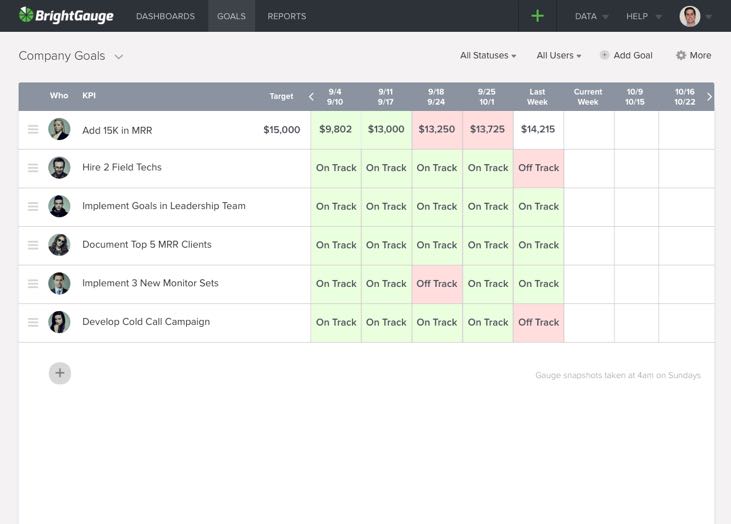
You can now track all of your company’s goals in BrightGauge! That’s right! BrightGauge Goals, formerly known as Scorecards, is an all-encompassing Goal Management system where you can track all of your company’s goals in one place. If you use EOS or Gazelles within your business, keep reading as you can now manage both your Scorecards and Rocks in this same module. For our HTG partners, managing goals set by HTG and keeping your team aligned on them has never been easier. Why Goals? Goals have always been a personal passion of ours. At BrightGauge since day 1 we have believed that being transparent and accountable with everyone on the team with our KPIs and goals will keep everyone aligned and motivated. We are pleased to say that over the last 6 years of growth we have been proven right. Fortunately, our top tier customers have felt the same way and have either implemented a formal goals program (such as part of EOS) or have been asking for a way to organize their goals so each of their team members are on the same page. Whether you call your goals “Rocks”, “OKRs”, or “SMART Goals”, it’s all about setting a goal for the company, the team, or the individual and holding someone responsible for reaching that goal. Process vs. Outcome Goals Not all goals are created equal and this is where BrightGauge Goal Management really shines. With this launch we have done two things to better differentiate two types of goals: Changed “KPIs” as they exist now to “Process Goals” Added a new Goal type called “Outcome Goals” An Outcome Goal is what you want to achieve (e.g. lose 5lbs, we’ve all said it) whereas a Process Goal is focused on the process by which you can achieve your Outcome Goal. A Process Goal for the lose 5lbs example would be walking 10,000 steps a day or hitting the gym 3 times a week. You can more easily control the Process Goal than the Outcome Goal, but it’s really important to have both. For our EOS fanatics out there, a Process Goal is your Scorecard KPI and Outcome Goal is your Rock. Works like a charm! And you can rename the collection of Goals to whatever you want. Weekly Check-ins The secret sauce with the Goals feature set is that we help keep you and the team accountable with your goals weekly. Accountability is the #1 challenge with not hitting goals! At the end of every week, BrightGauge Goal Management will email everyone who has a Goal to remind them to check in their Goal status. If you have chosen an Outcome Goal, you will be presented with an option to decide whether you are On Track vs. Off Track for the Goal. We cleaned up this interface a bit so it’s faster to check in and also to encourage adding context to every Check-in. A summary email with the Goal context included is then emailed to everyone (including any Viewer who has access to the Goal List). All the History and Context Together in One View This launch includes a new consolidated Goal Detail page. In this page, anyone with access to the Goal can easily see the Goal details and history of Check-ins with context all in one, easy to access location. We Made It Easy to Get Started We know it can feel a little daunting to venture into goal setting territory with your team for the first time. In order to ease this anxiety and pain point for our customers, we asked for feedback from our customers on what goals they use in their company to keep their team accountable and aligned. From their answers we curated a list of Goals organized by team. We called these Goal Inspirations! All you have to do is select a few Goals, put a target number (if it’s necessary), and assign yourself or someone else in the company. Of course these are just inspirations... you can adjust titles and descriptions as you feel necessary. Goal Filtering For our power users... this feature is for you! We know you want to create Gauge-based Goals for each of your engineers and/or salespeople (e.g. utilization weekly) and now you can! With Goal Filtering, we made it easier and faster to create multiple Goals based on the same Gauge. To utilize Goal Filtering, click on the filter icon next to the Goal name and you will be presented with an option to pick any text field from the Gauge’s Dataset. The text filters work just like they do in the Gauge Builder and are applied to the entire Gauge. Now you can quickly create multiple Goals powered by ONE Gauge and filter it at the Goal level. This is a big time saver and a way to assign everyone a similar Goal powered by just one Gauge. We had a busy 12 weeks of working on Goals, including pausing to stay safe during a major hurricane, but we’re really excited to have this important feature launched! We hope you find it as advantageous and valuable to your company as we have found it to be in ours. As always, let us know if you have any questions or would like help implementing Goals in your company.
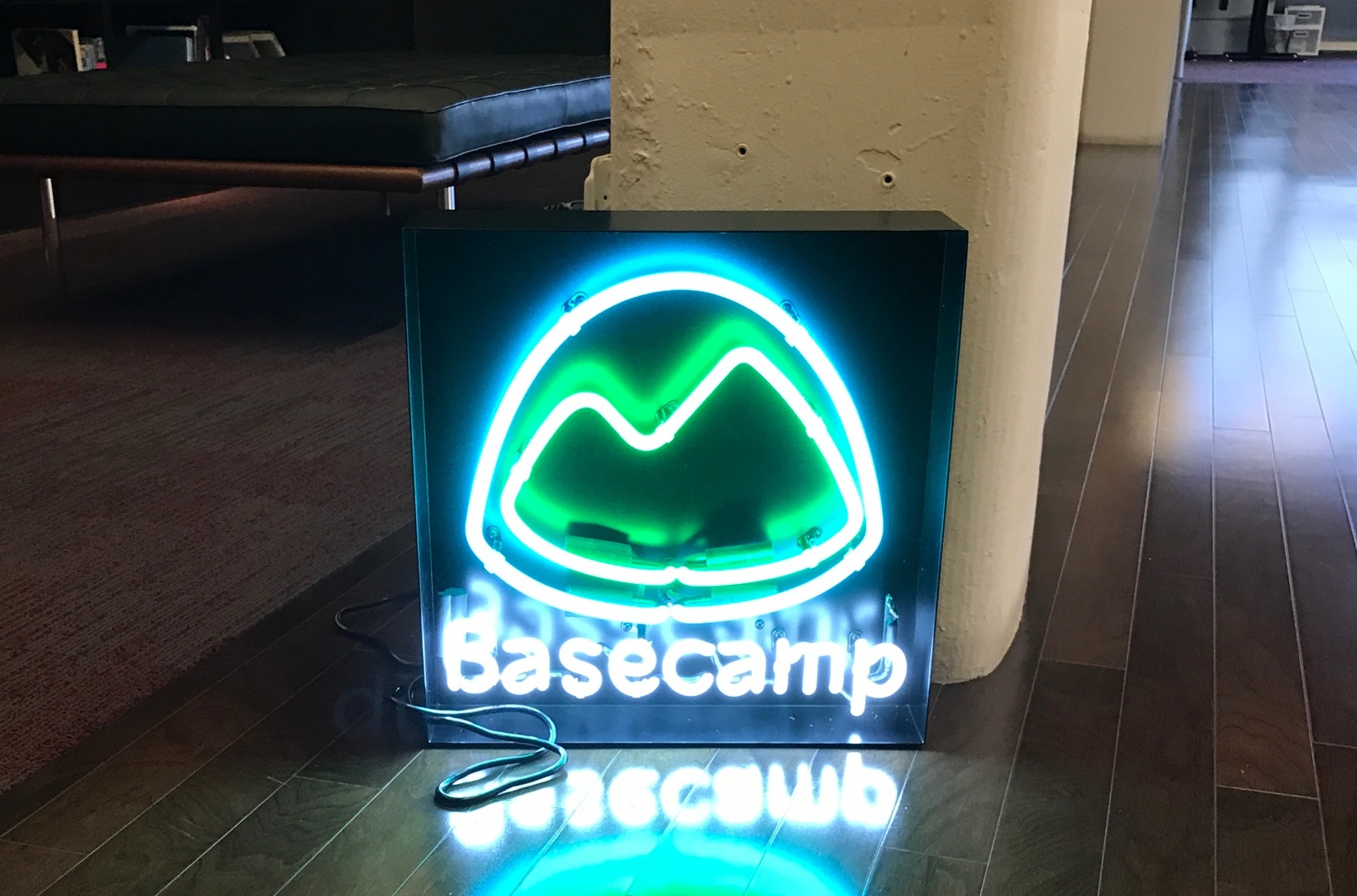
Ever since last October when I attended a “How We Work” workshop at Basecamp headquarters, I’ve become fascinated with the concept of “Deep Work”. Deep Work, defined by Cal Newport, is as follows: “Professional Activities performed in a distraction free concentration that push your cognitive capabilities to their limit. These efforts create new value, improve your skill, and are hard to replicate.” The Basecamp workshop was not formally about this term but it was essentially what they were preaching in regards to how they work at Basecamp (and how they use their product to help them do such deep work). At Basecamp (and in the book) the theory is that if you protect your attention from distraction and focus as much as possible, you will actually get so much MORE real work done. And not only that you’ll get more work done but that you’ll also be happier/feel better because you’ll be working in a deep state called “Flow”. By no means is “focusing” a new concept but in our modern world of social media and instant messaging and iPhones, it’s so much harder to practice than ever before and therefore the concept feels so “different”. Since that workshop I’ve become obsessed (even Eric has, too) with moving towards a distraction free work environment and I’ve become vigilant against unnecessary distractions (to the point of annoying many around me!). The low hanging fruit last year was eliminating many meetings and outside of work obligations (saying “no” is easier than you think!). At the beginning of this year, I doubled down and decided to formally implement a work schedule that would allow me to carve out “deep work” time throughout the day. The schedule I wrote down was this: 4:30am — wake up 5am — 7am — deep work 7am — 9am — personal time, exercise, commute, shallow work etc 9am — 12pm — deep work 12pm — 1pm — lunch, ideally with someone from the office to talk shop 1pm — 4pm — deep work 4pm on is personal, commute, and shallow work time. If you add up the actual work time, it’s a full distraction free 8 hours a day and my goal was to implement this 4 days a week. The results have been phenomenal. I have to admit…the goal of 4 days a week was a bit audacious and a full 8 hours a day has been tough as well. Mostly because the schedule above doesn’t account for any meetings outside of lunch, bonding time with the team, or the inevitable travel weeks. Even so, the results of 3 days and averaging > 6 hours of deep work in each days is an absolute game changer. I was a pretty happy guy at work before I implemented this schedule and now I’m getting even more fulfillment out of my work days than before. Not to mention the amount of work I’m getting done still surprises me 5 months in. This schedule and focus has boiled down to three things: Getting more work done Higher percentage of that work being more creative/thoughtful All in less time than previously And I’m not even fully distraction free yet. It’s crazy powerful… I realize this type of schedule is not for everyone but many of us in this economy are knowledge workers and I believe any knowledge worker can implement some variation of deep work into their lives. I’ve spoken with countless friends about this practice and the sentiment has been the same with everyone, they want get more quality work done. For them and for many of us, the low hanging fruit is there to pick off and get DEEP. If you like the concept of being more productive in less hours, I encourage you to follow the Basecamp blog and most definitely read the book “Deep Work” (or one of the main summaries online). And if you’re in Miami and want to join a team who believes in cutting out the crap and getting work done, we have plenty of positions open at BrightGauge! I’m a firm believer that in our new information economy, people and companies who can master this focus will be the winners. More work, more creativity, less time. Can’t beat it… Editor's note: this blog originally appeared on medium.com and has been re-shared in it's entirety here.
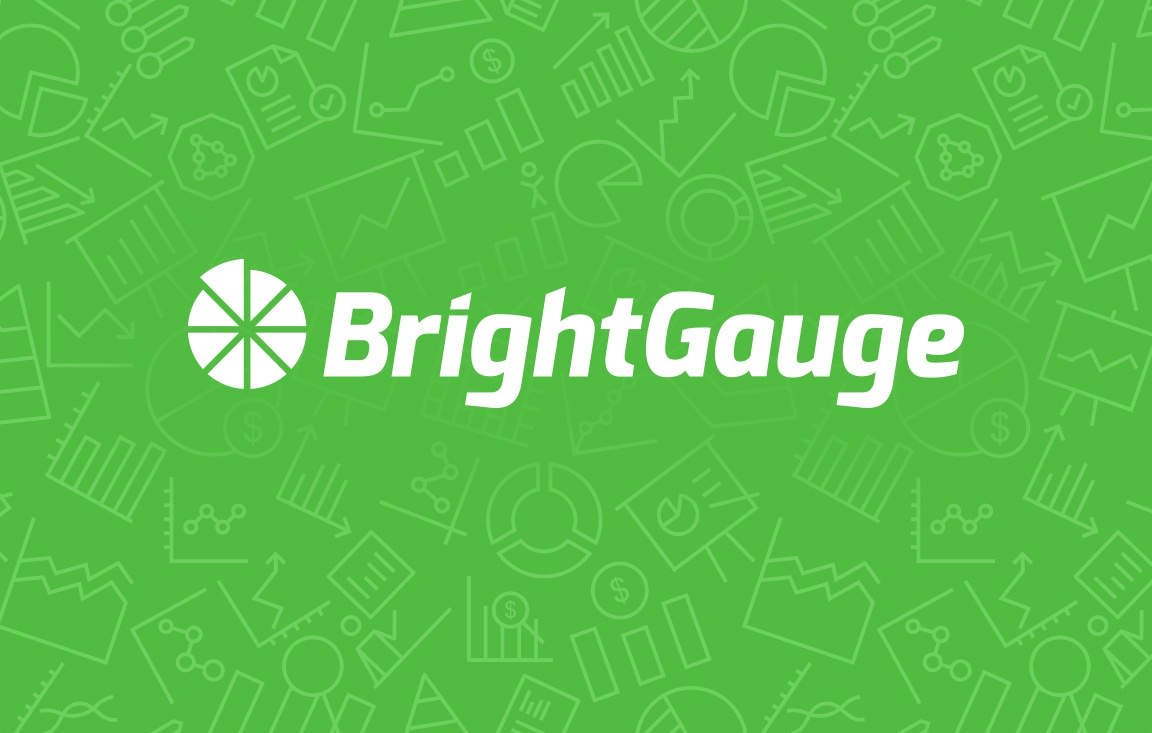
Editor's note: in an email sent to customers today, BrightGauge CoFounder, Brian Dosal, shared a closer look at our recent product focus, what's coming next on the roadmap, and also some big news about our team. Here's what Brian had to say... Forgive me for the long read but I wanted to take a few moments and give you a personal update on the 5 big things going on at BrightGauge. Feel free to skip around! Reports Overhaul Recap More “Out of the Box” Defaults Cadence & Accountability Time Roadmap & Feature Requests New CEO, Same Family 1. Reports Overhaul Recap Last month we released a huge overhaul to how our reports look on delivery. Not only did we want to tackle a big known issue (PDF inconsistencies) but we also wanted to set ourselves up for more exciting features in Reports to come. One of those exciting features launched with the overhaul was Page Breaks (woohooo!). A really awesome feature that had been requested for years! Unfortunately the overhaul caused table column widths to revert back to fixed width...whoops, we’re fixing that so not to worry. With this overhaul we made two behavior changing decisions (1) tables go full length in reports and (2) page breaks are included in all reports. A few customers didn’t like those changes and if you’re one of those customers, I do apologize for any frustration. It was a tough decision but one we did consciously for the long term benefit of the Report Builder. If I can buy them/you a beer, I’ll gladly do so. 2. More “Out of the Box” Defaults! We’ve taken Randall, our Integration Product Manager, and locked him in a closet just to build out more default dashboards, report templates, and gauges based on feedback we’ve received from everyone (kidding, he is not in a closet, would be to hard with his 6 foot 5 inch frame)! But he did crush some new and awesome Dashboards & Report Templates that you can tweak to your liking. Contact support for help in tweaking of course. CW = Connectwise Manage. Client Efficiency Index (CW On Premise only) Member Efficiency Table (CW) Procurement Information (CW) In/Out Data (CW On Premise Only) Projects (CW API Only) Machine/Client Health Score (CW Automate 11) Sales (Autotask) 3. Cadence & Accountability Time! We’ve just recently turned our attention (at least a big part of it) towards building out the Scorecard featureset. You should have seen some recent features like Scorecard Summary Emails and Archiving Scorecards. More is coming, quite a bit more. The introduction of Cadence & Accountability to KPIs has really been a game changer for a lot of companies, including ours! If you haven't gotten started with scorecards, email us and we’ll give you some ideas. 4. Roadmap & Feature Requests Speaking of features, with a broader product and fast growing user base, we’re getting quite a bit of feature request feedback. I’m trying to communicate more about where we’re heading and recently I wrote a blog post about how we structure our priorities. I’m currently working on some ideas on how to better share out a roadmap framework (on a more regular basis) because the feature request board just isn’t working with over > 600 requests and climbing. 5. New CEO, Same Family My brother and I both started the company and had split titles of CEO (him) & President (me). Of course at less than 5 team members, those titles didn’t mean much since we were doing anything needed to grow the company. As we grew we had split responsibilities with me focusing on all things “product” and him doing everything "growth" related (sales & marketing). Now that we’re over 20 employees and still going, we carved out a third team (Success) but there were no more brothers left...:)! So I took over that lead position and we then decided to make me officially the CEO going forward. My responsibilities have always been around the product/service and we wanted to be sure the whole company is aligned around just that, the product and service to you. My brother is still intimately involved and not much has changed in that regard, but we wanted to let you know. That's a wrap... but I also wanted to say thank you for being a customer!!! We’ve, honestly, never been more excited about what we’re building for you at BrightGauge than we are right now. It's going to be a huge 2nd half of year of improvements for you and everyone. Cheers, Brian CoFounder, CEO PS - We’re hosting our 2nd Data Driven Workshop this week and will share lots of pics on our instagram feed. We hope you can join us for one in the future!

At a recent workshop we hosted at our office for customers, I spent quite a bit of time explaining how we build our product at BrightGauge and how we prioritize what we build. We had 15 attendees and they each had a few features they wanted us to add in the product and, very fairly, they were just trying to pinpoint when those features would be available. The short answer I had to tell them (in a somewhat joking way) was “we have no idea”. Because the reality is that we do not maintain a well defined, detailed roadmap of any significant timeline. There were a lot of blank faces when I said that, but it was the truth. Most of the features they asked for we definitely want to build... so I couldn’t even say “no we’re not going to do that”. The reality is we have over 150 features, small and large, on our backlog and we want to get to them all. Therefore the only thing we can really focus on is prioritization and iteration. We continued to have the conversation and here’s the high level of what I explained to sync up up on how we do it at BrightGauge: Things Change Over Time, Small Iterations are Key Like any technology business, the only constant is change. We know this and it’s why the popular agile development process has become so pervasive. Our agile process has us doing work in “2 week sprints” where we commit to a bunch of work to do in just 2 weeks. Ultimately, that’s why I gave that joking answer about not knowing when things are coming out because we only know what’s on the coming 2 week sprint. We keep iterating every two weeks and re-prioritizing and reworking the requirements, etc. It’s all about iterating. We Work in Themes Essentially, from a broader perspective we do know what we want to get done from a high level and we call those “themes”. These themes span over quarters typically (and some cases an entire year) but most of the time themes don’t translate into exact features customers would expect. They are instead of phrases or a word that describes the goals: Here are some previous examples: Put Billing in the app (Q4 2016) Launch Scorecards v1 (Q4 2016) Launch Leaderboard Gauges (Q2 2016) These themes are broad strokes that contain a whole bunch of little features inside of them. We used to talk about these themes publicly in 2015 but what happens is themes can mean different things to different people. “Improve Report Builder” may mean page breaks to one person or custom fonts to another. To us, the themes are just where the focus is going to be for the set period of time. We know the first few features that we’ll develop as part of the themes but after that we let priorities shift based on where we’re at in a sprint and in a quarter. Priorities always shift slightly within a theme based on long term vision, customer feedback, internal debate, resource constraints, etc. So the themes are loose in definition but keep us focused over a set period of time. Constant Delightful Features As much as we love themes, we don’t want to be bound to just a few areas of the application to improve at one time. We always want to be releasing small improvements (we call them delightful features) that span across our entire product. These delightful features are small, bite sizable things we want to do that we don't want to wait until a larger theme is greenlighted. If/when the themes aren’t soaking up all resources, we throw delightful features in the mix based on the same inspiration as themes (vision, customer feedback, internal debates, resources, etc). When I explained this one to the workshop, we decided to have some fun and prioritize their wish list as an exercise. We asked everyone to submit their feature request list to us during the session. We then removed the far fetched wild ones or the ones that need to be part of larger themes. What was left was a bunch of “delightful features” folks wanted (80% of them). So we had the group pick their top 3. And the ones with most votes we then committed to doing over the following three months since they were on our backlog anyway. Since then (6 weeks ago) we’ve done three of them (Text Module in Dashboards, Scheduled Reports per client, and Goal line in bar charts). Summary It can be frustrating to not have a roadmap to hand out to customers or prospects. Trust me, I’d love to have a detailed plan. But the reality is it would just be rubbish since the above holds true. But I can tell you that right now, as of May 2017, our current themes are: Overhaul Report Builder Improve Out Of the Box defaults for new and existing customers Improve onboarding workflow for new customers We do look at the feature request board all the time, even if we do not necessarily comment on them (there’s 500 posts on there). We look at the items that get the most votes as well to keep us honest on what we pull on each sprint. Please keep providing feedback as it definitely does impact our internal plans! And if you ever have any specific questions, feel free to contact our support team and they can provide insights. We’re fairly transparent here so they can share what they know when you connect.
